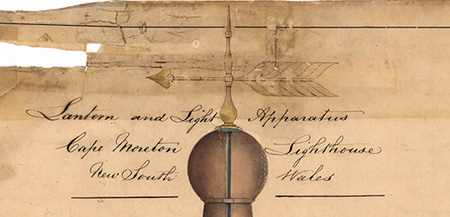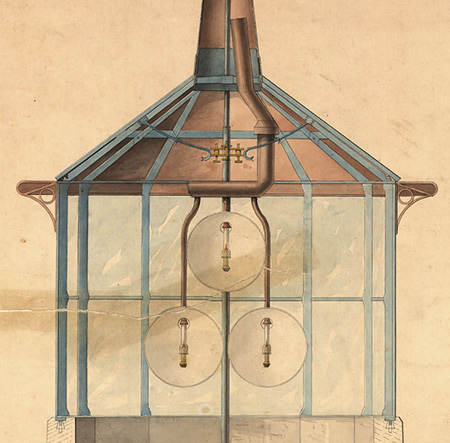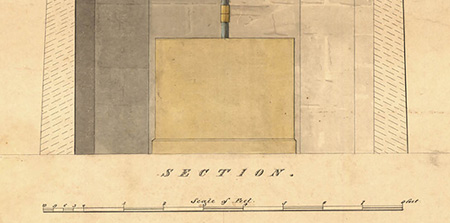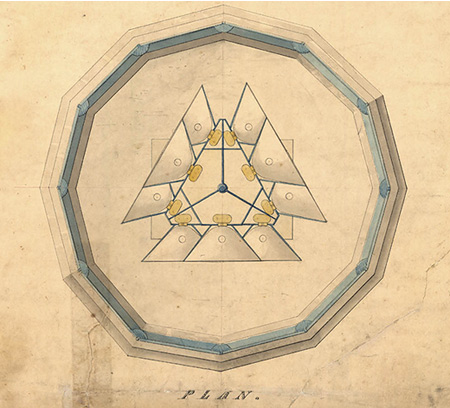Wednesday 29 February 2012
Catoptric lights
Some work I’m doing at Cape Moreton Lighthouse prompted me to do just one more search for historical photographs and drawings online. At the National Archives I found something new—this drawing (item 1717447), signed by W Wilkins, lighthouse engineer of Long Acre, London, of a proposal for Cape Moreton lighthouse, the first lighthouse in Queensland and the only one built of stone.

Detail from Lantern and Light Apparatus: Cape Moreton Lighthouse: New South Wales. It’s a beautifully executed ink and watercolour cross section, coloured to indicate the materials used for the different parts. As well as being a lovely thing, the drawing has historical interest for me.

In lighthouse lingo, a
lantern or
lantern house is the weather proof structure that protects the source of light and its attendant lenses or reflectors (collectively called the
optical apparatus). The drawing shows the lantern’s copper roof (called a
cupola) in copper colour, and the iron glazing bars (
astragals) in blue.
In the late 1850s this kind of catoptric apparatus was being superseded by new designs that used an array of lenses and prisms to distribute the light from a single large burner.
William Wilkins was an important English maker of lighthouse equipment in the 1840s and 1850s. He designed improved lantern houses (in 1848 he installed a new lantern on John Smeaton’s famous 1759 Eddystone lighthouse). Wilkins also promoted the benefits of burning vegetable oil instead of whale oil for lighthouse lighting.

The base of the lantern house (called the murette) was formed by a stone wall. The square box in the middle of this space contained a clockwork mechanism to rotate the lamps and reflectors. The clock was powered by a weight on the end of a chain, which dropped slowly down the centre of the lighthouse tower—several times each night the light keeper had to turn a crank to wind the weight up to the top.

This plan view shows the array of lamps and reflectors facing three different directions. This drawing shows three lamps in each of the three faces. The equipment that was actually installed at Cape Moreton had more lamps than this—Winifred Davenport’s history of the Harbours & Marine department records that there were 21 lamps, on three faces of 7 lamps each, placed in three rows, the upper one containing 2 lamps, the middle 3, and the lower 2.



